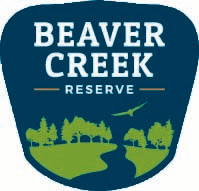By: Mia Zacho, WisCorps Naturalist
Here at Beaver Creek Reserve our mission is Connecting People with Nature. One of the most unique ways we do so is through our animal ambassadors. Raising animal ambassadors is something Beaver Creek has proudly done for almost 40 years. Since 1985, we have had many cherished residents. Beaver Creek has had the privilege of housing a variety of native and even federally threatened or endangered species. One of our oldest, long term residents is our Common Snapping Turtle, Snapper. Donning his prehistoric looking features and his large size, he is a pristine example of what these creatures are like in the wild. Snapper was hatched in 2011 here at Beaver Creek and has been in our care since. Each animal ambassador comes with their own unique care requirements. As a nature center we are equipped with the necessary knowledge and materials to care for wild animals like Snapper. As captive “wild” animals grow, their own unique needs grow with them.

With his exponential growth as our resident “dinosaur,” Snapper has already grown out of two different enclosures. His most recent enclosure was developed in 2016 with the expansion of the Scheels Discovery Room. Our commitment to the wellbeing of our beloved animal ambassadors is central in our standards for daily care; however, enclosure development takes time. Since Snapper came to us, his shell has grown to a whopping 11 inches in diameter. According to the Association of Zoos and Aquariums’ (AZA) standards adult Common Snapping turtles require approximately 10 gallons of water for every inch in diameter of their shell. Due to Snapper’s healthy rate of growth, one of Beaver Creek’s WisCorps Naturalists, Mia Zacho, has begun the process of designing the home he deserves as her year long capstone project!
Working alongside specialists in reptile husbandry and exhibit design, we hope to build a permanent enclosure for Snapper to accommodate his needs as he grows in size for years to come. His new enclosure is planned to mimic a wetland habitat and will consist of a 550 gallon aquatic tank with a large rock platform for him to bask in the heat. A project of this magnitude will take time and resources. This year we are launching a campaign to raise funds for the design and development of Snapper’s forever home. This is where we need your help! If you are interested in supporting, please visit our website beavercreekreserve.org to make your contribution. It takes a village to keep Beaver Creek wild, and we are beyond grateful for our community who makes this possible. Learn more & donate!



